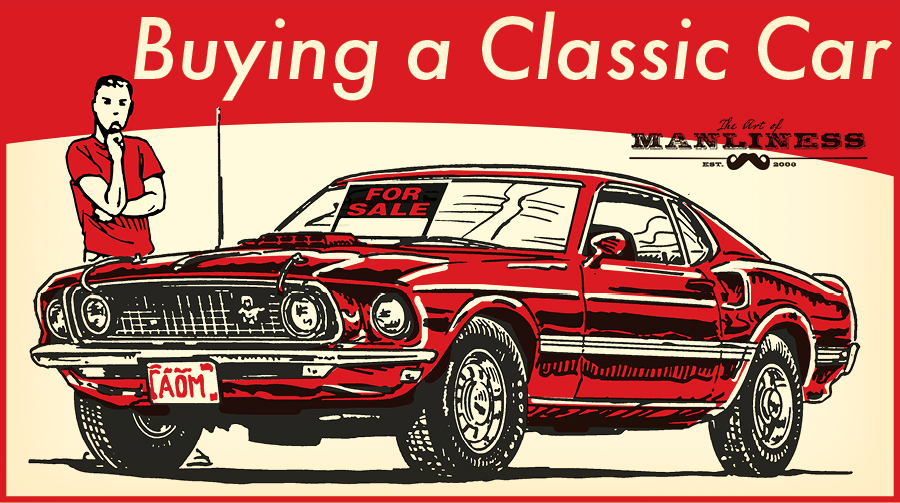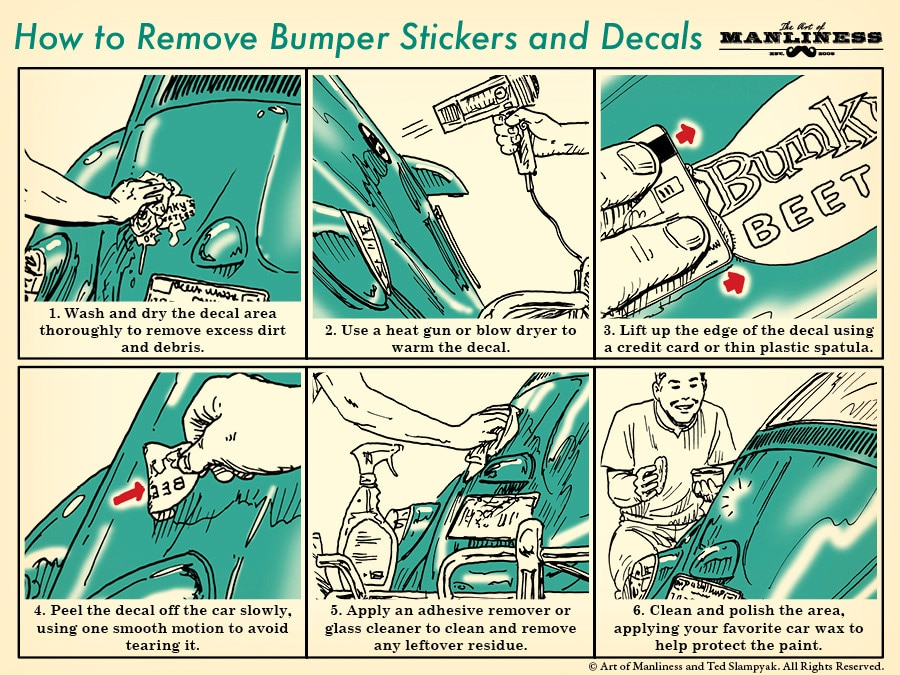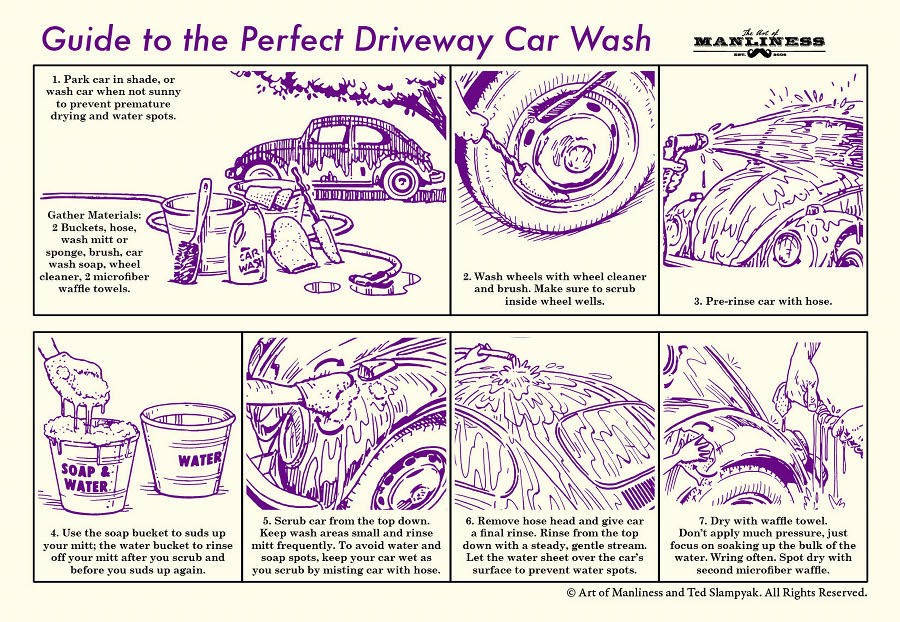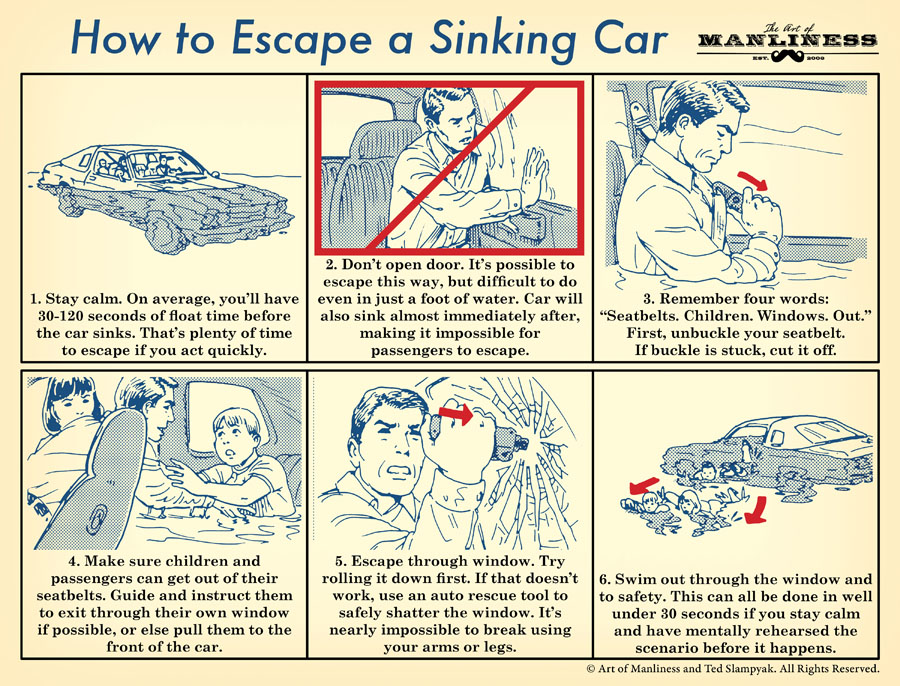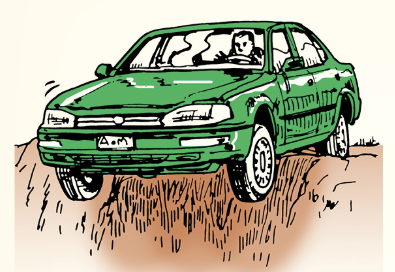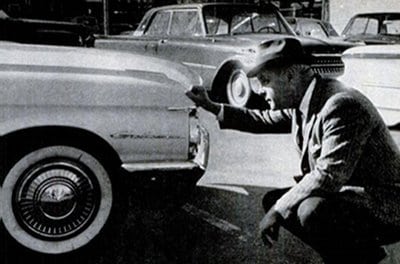
Last year, my wife and I were eating dinner when we suddenly heard a crash outside. We ran out the door and saw that someone had smashed into our car, which had been parked on the street. The lady driving the other car was drunk and driving on the wrong side of the road. The lush and her car were completely unscathed, but our car was totaled. Doesn’t it always seem to work out that way?
Kate and I had to buy a new car.
Well, new to us. We ended up buying a used car. Now, this was the first time I had ever had to buy a used car without help from my parents, so I was sort of clueless about the process. This was my first big, adult purchase. From doing some research on the web and talking to friends and family, here’s a list of tips and advice on how to buy a used car.
Benefits of Buying a Used Car
Avoiding depreciation. It’s common knowledge that once a new car drives off the lot, its value depreciates immediately. In the first two years of ownership, a new car can lose about 30% of its original value. And if you decide to sell your new car a few years after you buy it, you’re going to lose a lot more money in the re-sale than if you had bought it used.
Price. If depreciation is your enemy when buying new, it’s definitely your best bud when you buy a used car. There isn’t much difference between a brand new car and a two-year-old car. By buying a car brand new, you’re basically paying 30% more than you need to. That’s a big mark-up for that new car smell.
You can save even more money if you decide to buy older cars that have more miles on them. A buddy of mine back in college bought an ’86 Honda Accord hatchback for a couple hundred dollars. It was super ugly, but it drove just fine and lasted him a few years.
Bigger selection. Because used cars are cheaper than brand new cars, you effectively widen the selection of cars you can purchase. Instead of being merely a dream, luxury and sports cars enter the realm of possibility. I remember back in high school when my dad and I were shopping around for a used car, I found a late model (this was back in the 90s) Mercedes Benz for about $5,000. I couldn’t believe it! Something had to be wrong with it. So, we took it for a test drive and to a mechanic. It was in tip-top shape and drove like a dream. I ended up not buying the Benz. I was too punk rock for that. Instead I went with a 1992 Smurf Blue Chevy Cavalier. Now that’s punk rock. However, the experience did open my eyes to the fact that if you look hard enough, you can find some awesome cars for super cheap when you buy used.
Save money on insurance. If you buy a considerably older used car, you can save money on car insurance by only getting the state mandated minimum coverage. If your car is worth less than 10 times the premium on your insurance, it’s probably not worth getting comprehensive coverage.
Buy a Used Car from a Private Owner or a Dealership?
When you buy a used car, you have two possible sellers: a private owner or a dealership. Each has its advantages and disadvantages.
Owner Advantages
- Great deals. When you buy from a person who put an ad in the paper or on Autotrader.com, you can often find some really good deals. The best deals I’ve seen are at estate sales. You can find an older car with low mileage because the little old lady who owned the car only drove it to church and the grocery store. The car might smell like mothballs, but you’ll enjoy the sweet scent of saved cash.
- Less intimidating negotiations. Negotiations can also be less intimidating because you’re working with an average Joe and not some highly trained salesman who has to take your offer to a mysterious backroom boss to get it approved. Moreover, dealerships often try to throw in unneeded extras when you’re buying from them — extra floor mats, XM Radio, etc. When you buy from an owner, they’re just selling you the car and nothing more. Makes the experience less irritating and cheaper.
Owner Disadvantages
- Complicated and annoying negotiations. Owners tend to be more attached to their cars than dealerships. To them, they’re not just selling a product, they’re selling a memory. These sorts of owners can be difficult to work with. They’ll bust your balls in negotiation over a piece of crap Buick simply because it was their grandfather’s beloved car, and they hate to see it get in the hands of the “wrong person.”
- No consumer protections. Private sales aren’t generally covered by many states’ implied warranty laws. Implied warranties are unspoken and unwritten warranties that hold sellers responsible if the product they sold doesn’t meet reasonable quality standards. When you buy from an owner, you’re buying the car “as is,” meaning if the car has a problem (known or unknown by the seller), once you buy it, it becomes your problem and the seller doesn’t have to do anything to fix it. Moreover, private sales generally aren’t covered by the FTC Used Car Rule which requires dealers to post a Buyer’s Guide in used cars for sale.
Dealership Advantages
- Certified Pre-Owned Program. A CPO vehicle undergoes rigorous mechanical and cosmetic inspection before it’s put on sale. Moreover, CPO cars are often covered by a warranty beyond the original factory warranty which includes items like roadside assistance. Buying a CPO vehicle can give you the piece of mind that the car you’re buying is in great condition and not a piece of crap. Even if you don’t buy a certified pre-owned car, when you buy from a dealer, you’re likely protected by your state’s consumer protection laws such as implied warranties or warranties of merchantability.
- Extra services. Dealers will often throw in extra services for free that a private seller can’t. For example, when Kate and I bought our last car, before we drove it off the lot, the dealer cleaned and detailed it, performed a free oil change, and gave us a discount on our first service visit with them.
- Trade-ins. Dealers also take trade-ins which lowers the amount you have to pay in cash. Personal finance guru Dave Ramsey has a system set up that uses trade-ins on used cars to allow him to upgrade his vehicles every year or two without having to take out a loan on his car. Check it out. It’s pretty brilliant, if you ask me.
- Better negotiation experience (possibly). The negotiation experience can be a bit more even keeled with dealerships. It’s just a business transaction for them. You can avoid some of the emotional baggage you often find when negotiating with owners.
- Financing. If you don’t have all the scratch on hand to buy a used car, a dealership can often provide financing to help you make the purchase. And with the crum-dum economy, car manufacturers and dealerships are providing some pretty good deals if you decide to finance a used car. Things like cash-back or zero interest can make financing a used car a reasonable thing to do.
Dealership Disadvantages
- Higher list prices. List prices at dealerships tend to be more expensive than when buying from an owner. However, you can usually negotiate this down easily.
- High-pressure negotiation. Negotiations with car salesmen can be more high-pressured than when buying from owners. Selling is what these guys do for a living. They know every trick in the book and will unleash them on you without hesitation. When you step foot on the dealer’s lot, gird up your loins, and prepare to play hardball.
- Up-sales. Dealers will try to up-sale you until your eyes bleed. They’ll tell you that you need to add the extended warranty or that you need the new stereo. If you’re not careful, you can drive out with a used car that cost you $1,000 more than the original value simply because you let the add-ons creep in. However, you can turn the up-sale to your advantage by simply using it as leverages in negotiating. If the salesman presses for an extended bumper to bumper warranty, tell him you’ll take it only if he lowers the price of the car a few hundred dollars.
- Financing. Financing is both an advantage and disadvantage. When you finance a used car, you can end up paying thousands of dollars more for your car than if you had paid in cash. Dealers that finance to buyers directly want this extra cash, so they’ll often pressure car buyers to finance their new car. Save your money. Pay in cash.
Blue Book It!
When you’ve decided on the type of car you want, start researching its value using the available tools online. It’s essential that you know how much a used car is worth when you start negotiating.
Kelley Blue Book. Since 1926, Kelley Blue Book has been providing used car prices in their trademarked blue book.
Edmunds.com. Edmunds.com will not only give you the manufacturer’s suggested retail price (MSRP) for a vehicle, they’ll also check what others have paid for that particular car and give you an almost real-time market price for it.
How to Inspect a Used Car
Alright. So you’ve picked out a used car you like that’s in your price range. Before you make an offer, you need to inspect it to ensure you’re not buying a lemon. This is especially important if you’re buying directly from the owner. Your best bet is to take the car to a mechanic you trust and let him look it over for any defects. If you don’t have a mechanic handy, here’s how you can inspect a used car.
CarFax. Get one. CarFax is a comprehensive report of a vehicle’s history. The report costs money to buy, but it’s definitely worth it. The report can tell you if the car has sustained flood or frame damage, two things you want to steer clear of when purchasing a used car. All you need to run a CarFax report is the car’s vehicle identification number (VIN) which can be found on the dashboard, just below the windshield on the driver’s side or on the driver’s side door, just below the locking mechanism.
Initial Inspection
Before you start the car, give it this initial inspection:
- Look underneath the car for rust. A used car with a rusted frame isn’t structurally sound. While a rusted frame can be salvaged, it can be expensive and time consuming. Choose another car.
- Check the tires and wheels. Look for even tire wear. Uneven wear in the front could mean the wheels or suspension are out of alignment.
- Inspect the exterior. Look for recent paint jobs as this may indicate body damage. You can sometimes detect paint jobs by finding over-spray on the rubber window molding. Tap along repainted areas and listen for a change in tone that reveals patchwork.
- Check the interior. You don’t want a used car that’s been torn to shreds on the inside. When inspecting the interior, check the odometer. If the car says it has low miles, but the wear and tear on the inside looks like it’s been to hell and back, something might be up.
- Look under the hood. If you see rounded or stripped nuts and bolt heads, it could be an indication of shoddy repair work. While you’re under there, check the spark plugs to see if they’re newer than the rest of the engine. If they are, that’s a sign the car has undergone regular maintenance and tune-up. That’s a good thing.
- Kick a tire. Just for the hell of it.
Test Drive
- Drive it cold. A cold engine will tell you a lot more then a warm one will.
- Plan your route. You want your test drive route to be similar to your daily driving experience. Sure the car might drive nice on neighborhood streets, but how does she feel on the expressway? Mix up your route with freeways, city streets, rural roads, and parking lots.
- Turn the key. Does the car start easily? Does the engine make any funny noises while turning? Do you have to turn the key a lot to get the car started?
- Check controls. Test the wiper, lights, radio, and air conditioner controllers. There shouldn’t be any noticeable drop in engine performance when you turn on the A/C.
- Check the transmission. If the car is an automatic transmission, it shouldn’t make any loud clunking noises or hesitate when you switch gears. A manual transmission should shift smoothly. If you hear any grinding noise when shifting it could mean the synchronizers are bad. Also, check the clutch of a manual transmission by going slowly uphill in a higher than normal gear, like 3rd or 4th gear. If the clutch is good, the RPM will decrease and nearly stall. If the clutch is bad, the engine will rev but won’t go anywhere.
- Check the brakes. Find a road without any traffic and accelerate to about 50 mph. Hit the brakes hard. If the car pulls to the right or left, it may mean you have a loose brake caliper or there’s not enough hydraulic fluid on the side it’s pulling to. Also, if you feel a shuddering when you brake, it could mean the brakes are warped. The brake pedal should also feel firm when you press down on it. If the brake sinks all the way to the floor, you may need to replace the master cylinder.
- Check the alignment. While driving, take your hands off the steering wheel for a moment and see if the car pulls in one direction. If it does, you might have some front-end alignment problems.
- Check for smoke. You’ll need a buddy for this test. While driving full speed, take your foot off the accelerator completely for a few seconds, and then floor it again. If you see a blue cloud of smoke, it means oil is burning and the car has internal engine problems that may require an engine overhaul.
- Take the car over a bumpy road. Check out how the car responds to the bumps. If you feel the bumps a lot, the shocks are probably worn.
- Listen. If you hear rattles, groans, and clunks, that’s a problem. Sure, the ailment might be repairable, but why waste your time or money?
Negotiating
We could devote an entire post to this, so that’s what we did.
Alright, I know I missed some advice here. That’s where you guys come in. What other used car buying tips do you have? What should guys know when buying a used car? Share your advice in the comments.
Tags: Cars


